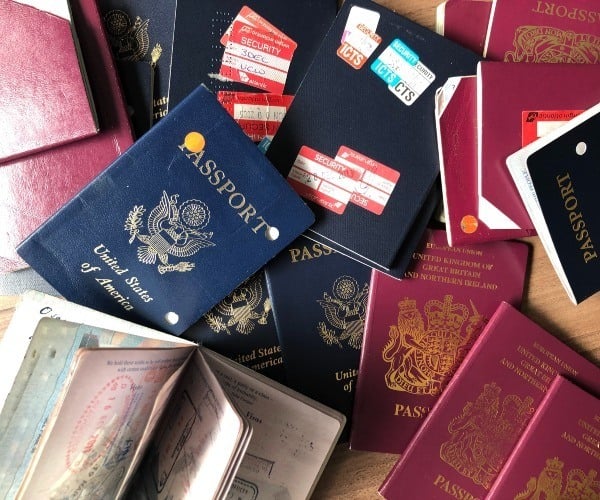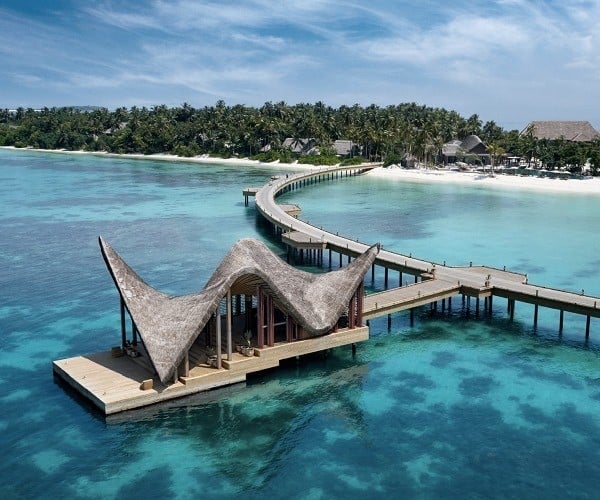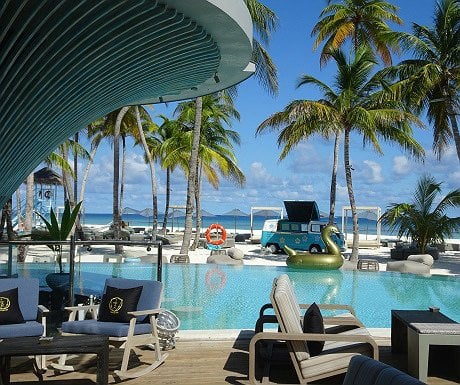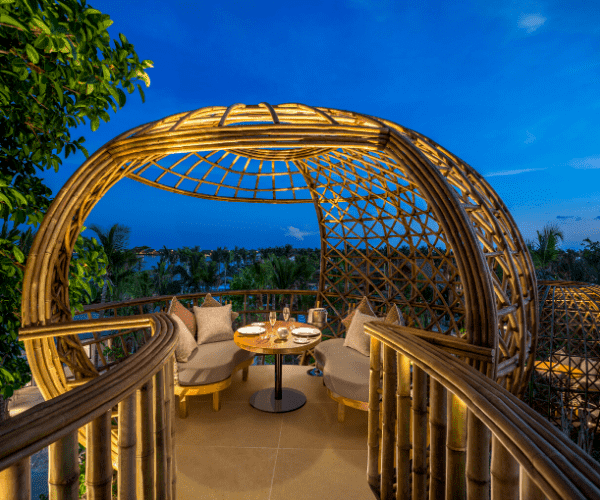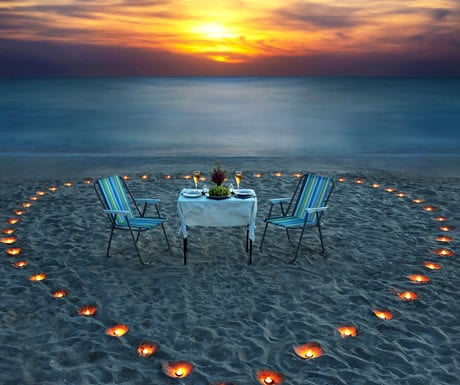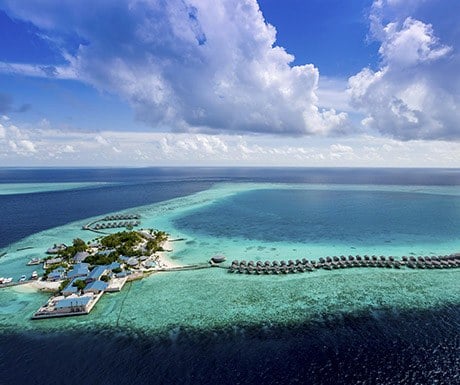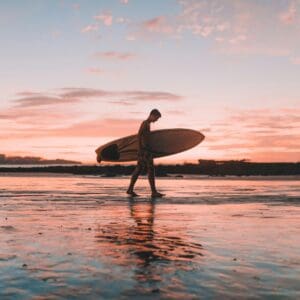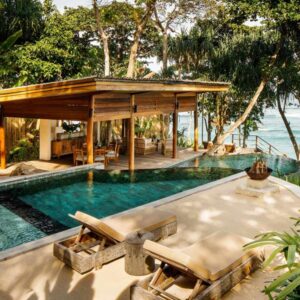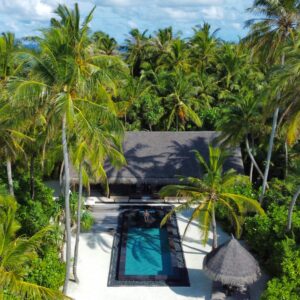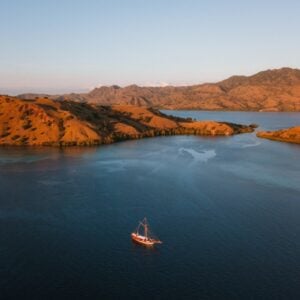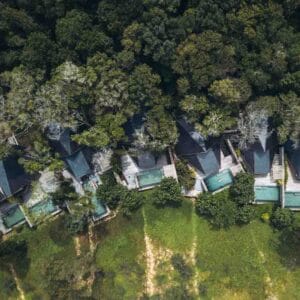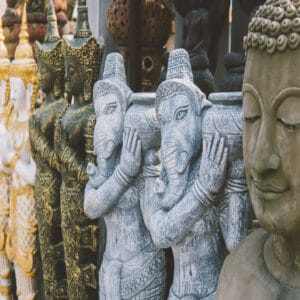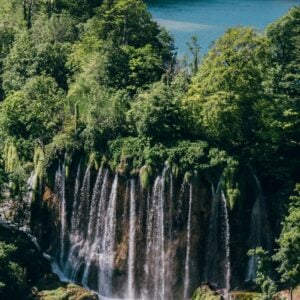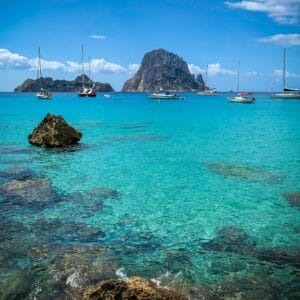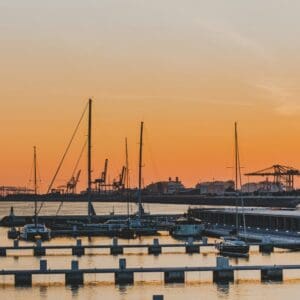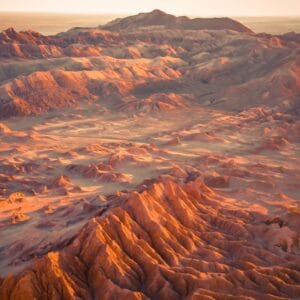Maldives Travel Guide
Home > Travel Guides > Maldives Travel Guide
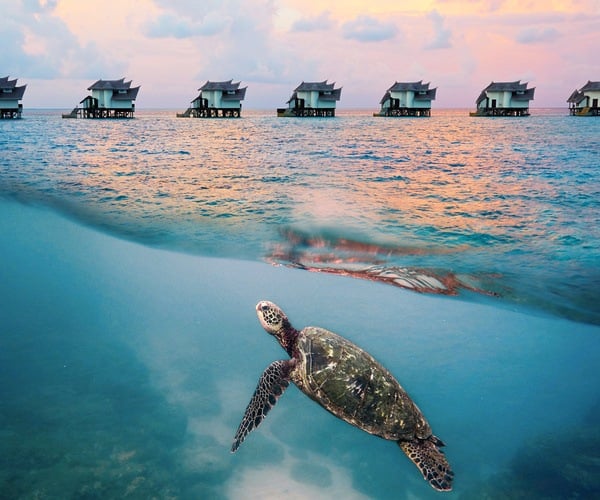
LUXURY TRAVEL
Maldives Travel Guide
The outstanding natural beauty, exotic wildlife and choice of over a thousand uninhabited islands has secured the Maldives a reputation as one of the world’s top tourist destinations, as was recognised at the World Travel Awards when it was bestowed the title of World’s Leading Destinations 2020. It remains one of the best places to leave behind the rest of the world and reconnect with nature’s wonders and your own wellbeing.
- Introduction to Maldives
- History of Maldives
- Where to stay in Maldives
- Accommodation in Maldives
- Places to visit in Maldives
- Things to do in Maldives
- Food in Maldives
- Getting around Maldives
- When to visit Maldives
- Events in Maldives
- Luxury travel tips
- Language and culture
- Useful phrases
- Weather in Maldives
- Useful information
Introduction to Maldives
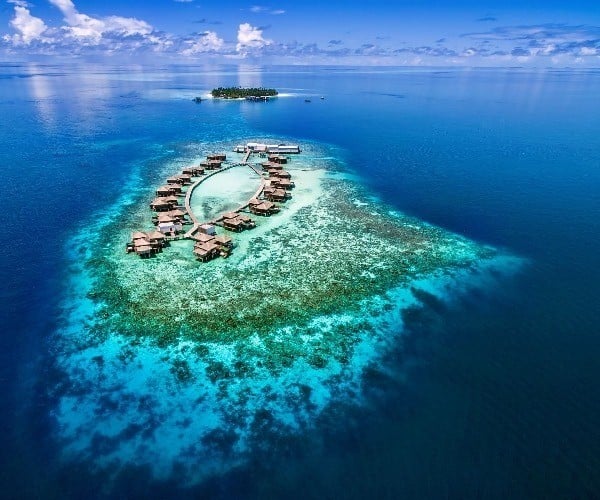
If anywhere on Earth epitomised an untouched tropical paradise, it would be the Maldives: Most of the islands have been left undeveloped, and an emphasis on sustainability to preserve the reefs for future fishing and tourism – the country’s two biggest sectors – is paramount.
Malé is a centre for the Maldives culture, and visitors can spend an afternoon discovering the ancient past in the museums or shopping in the galleries and markets for presents and souvenirs. There is little else to distract you from the natural beauty of the Maldivian atolls, and once you’ve completed a walking tour of the capital there’s the option to visit the marine parks and reserves to view some of the greatest natural wonders in the region.
The allure of untouched picture-perfect beaches has long attracted couples looking for a romantic getaway for Valentine’s Day or as a honeymoon destination away from the rest of the world. Spa massage services offer that extra bit of pampering and indulgence for singles and couples alike, letting stress and cares slip away. Beach bungalows and villas over the water give fantastic views of the sunrise or sunset, and the transparent cerulean waters invite visitors to explore a whole other world just beneath the surface.
It’s the reefs (known as gilis and thilas depending on their depth) that attract families and adventurers of all ages, who come to gaze upon the incredible primary coloured fish that live amongst their structures and attract larger, more majestic species such as turtles and manta rays. Water sports in general are ideal within the shallow waters just off the island shores, and kayaking, paddle boarding and jet skiing are all popular ways to pass each sunny day. The North Malé Atoll is known to surfers for its larger waves, while the Baa Atoll is a favourite for many who want to enjoy peace and serenity without being cut off completely from human contact. In contrast, the Addu Atoll far to the south is for those who want to Scuba dive followed by nothing better than relaxing on the warm white sands with a colourful cocktail for refreshments.
Evening entertainment in the resorts offers a mix of live bands, DJs and local talent for song and dance. You’ll have plenty of opportunities to show off your own moves each night before slipping away from all the lights to admire the unblemished night sky as waves crash against the shore.
It’s no wonder that the Maldives won World’s Leading Travel Destination 2020 at the World Travel Awards.
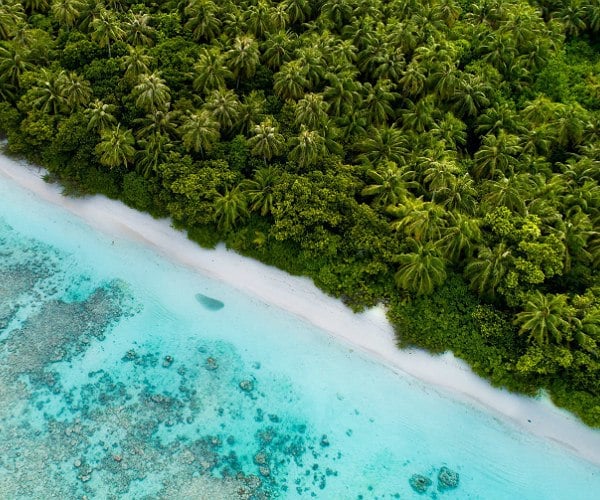
History of Maldives

The initial settlement of the Maldives is believed to have taken place more than 2,500 years ago by people known as Dheyvis from Kalibanga in India.
Few other details are known of this period; the copperplates, which were the recorded history of the Maldives written on coral artefacts, were lost millennia ago.
Furthermore, the original structures built by the first settlers were constructed with materials that would have degraded over time with the constant hot, humid and saline environment.
During this early period, the Giraavaru people also migrated to the Maldives from the Indian subcontinent, and along with the previous Dheyvis and subsequent Tamil and Malaysian settlers have left a lasting influence on the language and culture of the Maldives.
Buddhism spread to the Maldives around 3 BC and over the next 1,400 years founded the first iterations of the Maldive scripts, language, law, architecture and culture. Since the 7th Century AD Arab traders had converted populations along the Malabar Coast, and by the 10th Century their control of the Indian Ocean trade routes grew. The Maldives became an important link in the routes from Basra to Southeast Asia, and cowrie shells as well as coir fibre was used as a currency between Asia and the East African coast. Coir fibre was made from dried coconut husk and was exported to the Persian Gulf, Sindh, Yemen and China for use in making the rigging for the dhows that sailed the Indian Ocean. At its height, the Bengal-Maldives cowrie shell trade was the largest network for shell currencies in history.
The Buddhist period came to a close when in the 12th Century the Buddhist King Dhovemi of the Maldives converted to Islam, which is attributed in part due to the importance of Arab traders in the Indian Ocean. The title of sultan was used by successive generations up until 1965.
During the age of colonisation the Maldives became a base for the Portuguese from 1558, administered from the main colony in Goa. Efforts to introduce Christianity by force resulted in a revolt, and 15 years later the Portuguese were driven out of the islands. This event is still commemorated as the Maldives’ National Day. The Dutch became the dominant power in Ceylon by the mid-17th Century and the Maldives fell under their influence, ruling for more than a hundred years before the British took control of Ceylon in 1796 and included the Maldives as a British protectorate. This agreement was officially recorded in 1887 and stated the sultan accepted British influence over external affairs such as relations and defence, while internal affairs were taken care of by Muslim traditional institutions in return for an annual tribute.
The Maldives remained a British crown protectorate up until 1953 when the First Republic was declared, although this was short-lived; within a year the Maldives reverted back to a sultanate. A heavy British military presence was stationed in Maldives in the 1950s and employed hundreds of locals at the RAF Gan airfield in the Addu Atoll. When the new prime minister Ibrahim Nasir called for a review of the military agreement between the British and Maldivian government in 1956, the three southernmost atolls the benefitted the most from the British presence clashed with his views and went on to establish themselves as an independent state, the ‘United Suvadive Republic’ with Abdullah Afif as president and Hithadhoo as capital. However this republic was also short-lived, as a year later government police and gunboats from Malé went to re-establish control, causing Abdulla Afif to flee into exile amongst the Seychelles, then a British colony.
Where to stay in Maldives
The Maldives has long been established as a luxury tourist destination and as such there are no end of places to choose from amongst the most popular atolls, while those looking to travel farther afield can take their accommodation with them on a luxury yacht charter.
Where you stay is very dependent on what activities you are looking for: White sand beaches can be found throughout the region for those who want nothing more than to unwind with good company and a good book on the beach, and families looking for water sports will find that the five-star resorts will provide a range of options.
The North Malé Atoll and South Malé Atoll are quickly and easily accessed from the international airport and are some of the most developed tourist spots, offering cafes, restaurants and clubs for night-time entertainment along the beach. The resorts put on live entertainment, dance and DJ sets to go along with the sensational cocktails at the bars.
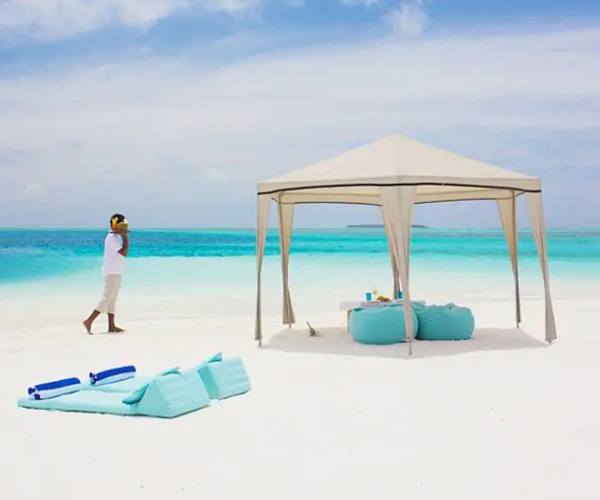
Snorkelers, Scuba divers and fishing enthusiasts will want to choose accommodation close to their interests to minimise travel time as much as possible: The Baa Atoll is well known to have some incredible reefs (known as gilis and thilas depending on how deep they are below the surface), and they are often visited by dolphins, turtles and rays. Some of these can be accessed using just snorkelling equipment, while others are deeper down and Scuba divers will enter a whole other world filled with diversity and brilliant colours.
The Ari Atoll is a favourite for big game fishing, though not the only place in the Maldives for those who want to travel even farther off the beaten track: The Mulaku Atoll and Huvadhu Atoll are also some excellent alternatives.
The Addu Atoll is the southernmost atoll in the Maldives, and most visitors coming here will do so for the spectacular diving opportunities around the reefs and at Villingili, the atoll’s only resort island, where the wreck of the BRITISH LOYALTY lies after it was scuttled in 1946.
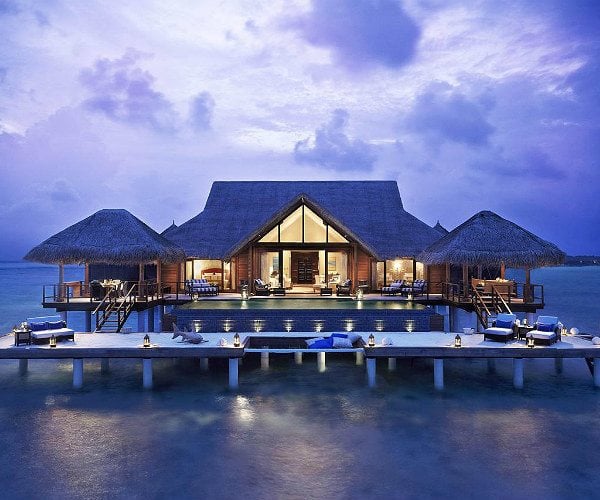
Accommodation in Maldives
Luxury is everywhere amongst the islands, and the variety of choice means that you can have something that perfectly caters to your interests.
A beachside villa is perfect for families or couples who want to be close to the lapping shores and far away from the rest of the world, and a selection of water toys will be available for guests who want to do activities such as kayaking, paddleboarding, and jet skiing. Restaurants and bars are on-site and shows and other entertainments are put on in the evenings, while activities can be organised during the day to keep children entertained for a couple of hours, giving parents time for their own interests – or a nap in the sunshine.
The Maldives has numerous spa resorts, to give those with a focus on health and wellbeing a place to enjoy some pampering and achieve inner peace. Culture seekers who want to see the modern side of life on the islands before discovering its natural treasures will find many five-star hotels available close to Malé, whilst options thin out at farthest destinations to the north and south; booking early to avoid the summer rush is highly recommended.
Luxury yacht charters are a popular choice for those who want to see and do as much as possible during a visit to the Maldives: Sailing yachts such as catamarans provide excellent stability and have contemporary surroundings, plenty of sunbathing space on board, a selection of water toys just for your group and a chef and steward/stewardess amongst the crew for delectable meals that cater to all dietary requirements and first-class service along the way. When the adults in the group want some time to themselves to rest and recuperate, the crew will keep the little ones entertained, or for older kids there are plenty of films and usually the option of board games and a games console keep everyone satisfied.
Places to visit in Maldives
Begin your tour of the Maldives in Malé, the capital city and a hub for culture amongst the islands. Sultan Park has a variety of attractions close together, and in a single day visitors can marvel at the Friday Mosque which was built in the 17th Century, tour the Old National Museum and the newer one which showcases relics from the Buddhist kings and Islamic sultanates, then view the work of local artists at the National Library & Art Gallery.
Holidaymakers looking to combine more local culture with adventures amongst the islands with a trip to Haa Alifu Atoll for to the north to visit the home and birthplace of Sultan Mohamed Thakurufaanu, revered for his campaign fighting off the Portuguese after they invaded in 1558.
The biggest draw of the Maldives is its exceptional natural beauty coupled with fine weather and the opportunity to have engaging encounters with stunning wildlife. These traits can be found throughout the archipelagos, with the farthest islands offering a quieter atmosphere than those close to international airports and the well-established attractions.
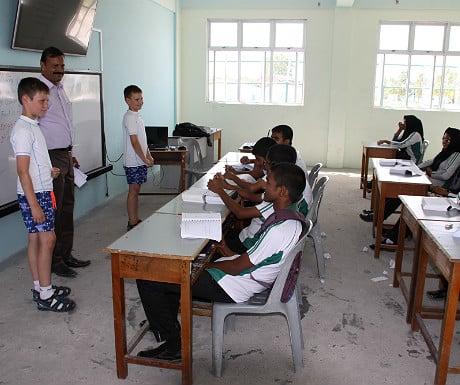
The Baa Atoll is one popular destination where romantics can walk the white sand beaches hand-in-hand at sunset, or hike the lush island interiors as you listen to native birdsong in places such as Dharavandhoo. Head into the Hanifaru Marine Protected Area for encounters with manta rays, iconic clownfish and so much more at the amazing snorkel and Scuba diving sites. The Lhaviyani Atoll is a great alternative or addition to the Baa Atoll, and is renowned for its biodiversity where it is common to see sharks and mantas swim among schools of fish at the gilis and thilas or its greatest attraction, the two 40-year-old shipwrecks known as ‘The Shipyard’.
Another exceptional location to witness the Indian Ocean marine life is the Addu Atoll far to the south. Shark Point has been nicknamed the ‘Shark Hotel’ because of the grey reef sharks that visit in numbers, and Turtle Point, as one might expect, offers opportunities to get up close to Hawksbill and Green turtles. The coral-covered wreck of the BRITISH LOYALTY is also located in the atoll, where it’s possible for divers to swim through the hull. More experienced divers can go on night dives and drift dives, and even complete beginners can gain experience Scuba diving in shallow, clear conditions and be richly rewarded with their beautiful surroundings as they learn.
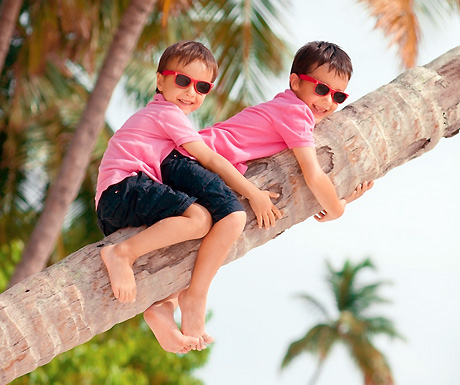
Things to do in Maldives
Life in the Maldives is all about the ocean, and even living and dining can be done underwater: The Muraka underwater villa at Conrad Maldives is the first of its kind to offer a Master suite 5m/16ft below the surface, accessed through a viewing tunnel. The floor above has dining and lounging areas, and a deck with an infinity pool. In another first, Conrad Maldives also boasts the world’s first underwater restaurant, Ithaa: The layout can be set up for a large group celebration, or for couples to dine together surrounded by the shimmering sea and its inhabitants.
Since setting a trend, a number of underwater restaurant and even spas have cropped up: M6M at Ozen by Atmosphere Resort Maldives has views of coral gardens, and at You and Me by Cocoon Maldives Resort diners have 360 degree views within the restaurant H2O, and 5.8 Undersea Restaurant at Hurawalhi Maldives can claim the title of the world’s largest all-glass underwater restaurant.
For some pampering while surrounded by colourful schools of fish, the spa services at Huvafen Underwater Spa on Huvafen Fushi cannot be beat. If however you want to remove the glass barrier between yourself and the wildlife, then there is an abundance of water sports and activities available at the resorts that will grant you close encounters and memorable moments swimming amongst amazing coral reefs.
Tropical white sand beaches surrounded by cerulean waters is the first impression many have of the Maldives, yet nothing beats the reality of actually leaving footprints in those powdery soft sands. The Maldives is all about taking life at you own pace, free from distractions whilst enjoying all the indulgences of our time. Rest on sun loungers or in hammocks and catch up on your reading list before catching up with family and friends over lunch and refreshments. A quick nap in the shade will have you ready for an afternoon of water sports, including kayaking, paddle boarding, kiteboarding and even surfing in some locations where the waves are right. In many places, the shallows offer the perfect place for a snorkel or a swim, and deeper out there are exceptional Scuba diving sites designed for beginners through to advanced to create an engaging experience for everyone.
Bonefishing and deep sea fishing are popular sports in the region, and there are expert guides available for hire to take you to some of the best spots in the archipelago. The Mulaku Atoll is the place to be for those who love the challenge and reward that fishing brings. Cook up your catch on a beach side barbeque and served with a fresh salad and the perfect refreshments to bring out the natural flavours.
Back on land, Malé is a city of culture that has a cluster of museums, galleries, boutiques and cafes around Sultan Park, and a half-day walking tour is available to take in the best sights and learn about their history. Malé is the best place for shopping too; find souvenirs on the streets around the Republic Square and the Singapore Bazaar, which is the Maldives’ largest craft market.
Destinations such as the Addu Nature Park are a desirable place to go on a biking tour, taking in the scenery of the impressive Eydhigali Kilhi wetlands along the way.
Depending on what time of the year you head to the Maldives, the festivals might be in full swing and you’re welcome to join in the vibrant celebrations.
Food in Maldives
Maldivian cuisine is also known as Dhivehi cuisine and has its roots from India and the Middle East, while neighbouring countries including Sri Lanka provide ongoing influences. It should come as no surprise that, as an archipelago nation, fish and other sea food is a large part of the diet, along with coconut and starchy staples such as rice. The cuisine is an essential part of the local identity, and holidaymakers should take every opportunity to taste the variety of dishes available. They might even inspire you to take some recipes back home.
International cuisine is available at the resorts, and allergies and dietary requirements can be catered for throughout a visit.
One of the ingredients in Maldivian cuisine is Ruku Raa (toddy), a sweet non-alcoholic drink that can be made into a liquid toddy sugar called Dhiyaa Hakuru through heating. Extended cooking turns it into a creamy paste called Karu Hakuru which is often added to rice or chapati to enhance the flavour.
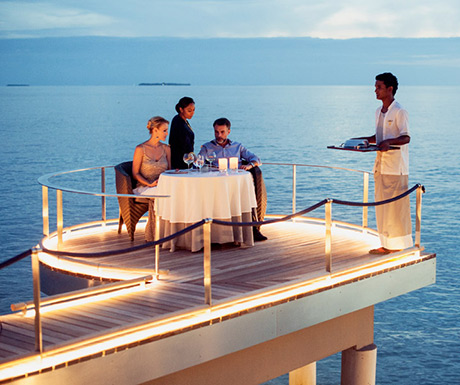
Laamu Atoll has a couple of dishes unique to this archipelago, one of the most common being Golha Riha. This is a fish ball curry made using reef fish, and is typically flavoured by the Maldivian curry paste Dhivehi Havaadhu as well as herbs and other spices. Rice or chapati is served as an accompaniment.
For dessert, ‘Naroh Falidah’ is made with breadfruit and jasmine water and dhiyaa hakuru, and is sometimes referred to as the Maldivian Doughnut by the international community due to the similar resemblance.
Addu Bon’di is often eaten as a snack or a dessert, and is made of sweetened coconut, jasmine or rose water, and sometimes dhiyaa hakuru.
The fruit of the Kashikeyo plant, also known as a screwpine, is used in a variety of desserts. One of the delicacies in Baa Eydhafushi is called Kashekiyo Foah, and is made by cooking the fruit into a pulp and adding scraped fresh coconut, jasmine water and sugar. Cornflour is then added to the mixture and heated until a dough forms, which is cooled and then rolled into small balls.
Visitors to Kulhudhuffushi in Haa Dhaalu Atoll might receive a gift to take back home: A crepe-like local delicacy made using water, rice, egg and sugar, and can be eaten on its own or with milk.
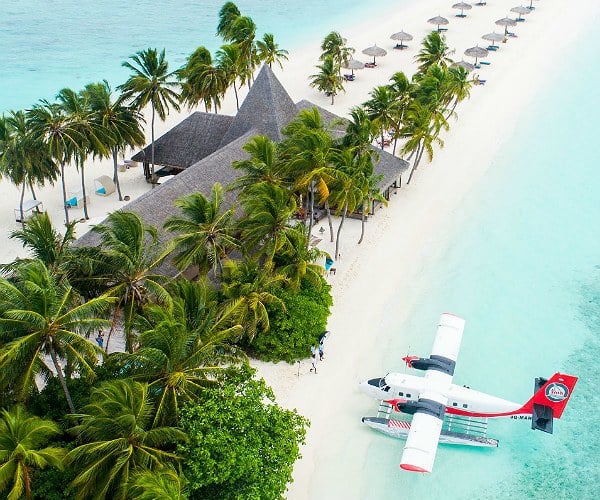
Getting around Maldives
Most visitors fly into the Maldives and arrive at the Velana International Airport near Malé. From here, it’s possible to access the other islands and atolls by watercraft, seaplane or domestic flight. Resorts can organise transfers to the resort island jetty, and several flights go from Velana International Airport to the 12 domestic airports. A private charter seaplane is the most expensive but also the most convenient way to travel around the Maldives, as commercial seaplanes and speedboats may not run on time. In contrast, the traditional Maldivian boat is called a ‘dhoni’ and is a cheap and leisurely way to travel for those who want to experience life as a local.
A luxury yacht charter is a popular alternative to choosing a resort and having to arrange separate transportation to the various atolls, dive sites and other attractions across the Maldives. There is the independence to travel throughout the islands at times that suit you and your group, and if you find that you prefer a particular destination, you can drop anchor and remain as long as you want.
There is the option of hiking or biking tours on the inhabited islands and through the nature parks, while the untouched islands leave only the option for exploring on foot, leaving little trace of your presence behind.
When to visit Maldives
Heading to the Maldives is very weather dependent: as with many tropical countries, there is a distinct wet season (monsoon season) and a dry season.
The greatest rainfall occurs from May up until December before blue skies and white wisps of cloud settle in for most of the remaining year. Because of this, the Maldives is a popular destination to escape dark and cold winter climates to celebrate Christmas and New Year in the warm sunshine.
The fine weather is pretty much guaranteed until February, after which the horizon might be marred with the odd raincloud, but the crystal clear blue waters will remain the same, and they remain at bathwater temperatures throughout the year.
March until May is a shoulder season, and an excellent time to go if you want to avoid the ‘crowds’ at the most popular resorts and attractions, the latter tending to be snorkelling and scuba diving sites.
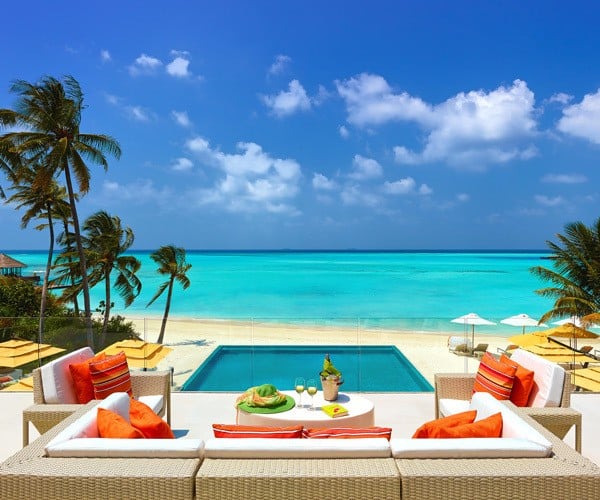
Those willing to risk visiting during the monsoon season will find manta rays at the Hanifaru Marine Protected Area from June to November, and fishing enthusiasts have the best chance to catch big game between November and March. Surf season in the North Malé Atoll runs from April to October, while the southern atolls are best visited from February to April.
Holidays provide an opportunity to immerse yourselves in local festivities; however local attractions, banks and restaurants are likely to be closed on these days.
Events in Maldives
Here is a comprehensive list of public holidays and festivals in The Maldives.
January
New Year’s Day
February
Presidential Address Holiday
March
Maldives International Marathon
April
Ramadan Begins
May
Labour Day/May Day
Eid ul Fitr Holiday
June
July
Hajj Day
Eid ul Adha
Independence Day
August
Muharram (Islamic New Year)
September
October
National Day
Milad un Nabi (Mawlid)
Prophet Muhammad’s Birthday
November
Victory Day
Republic Day
December
Luxury travel tips
There are few travel destinations in the world as luxurious as the Maldives, and within the resorts you can expect top quality service, exceptional international cuisine, a variety of water toys beside soft sand beaches as well as spa services on-site.
It’s possible to arrange your transport to avoid the crowds altogether: Private chartered flights are available to take you to the various atolls, and the resorts have road and/or water transport available to chauffeur you in comfort. However, be aware that transport rarely runs on time, and you could be waiting anything from twenty minutes to an hour for a speedboat to and from the airport, and if you intend to stay at multiple resorts, you will be flying back to Malé for your connecting flight.
A luxury yacht charter is another alternative to the resorts and is an excellent way to access all the snorkelling, Scuba diving and fishing spots while having your accommodation and sunbathing facilities on-hand. Both sailing yachts and motor yachts come equipped with a range of water toys that your group can use for as long as they desire. Other entertainments on board might include a sundeck Jacuzzi, wet bar or cinema set-up indoors or outside, and the accommodation has en-suite facilities so that friends, couples and extended family groups can cruise together in comfort.
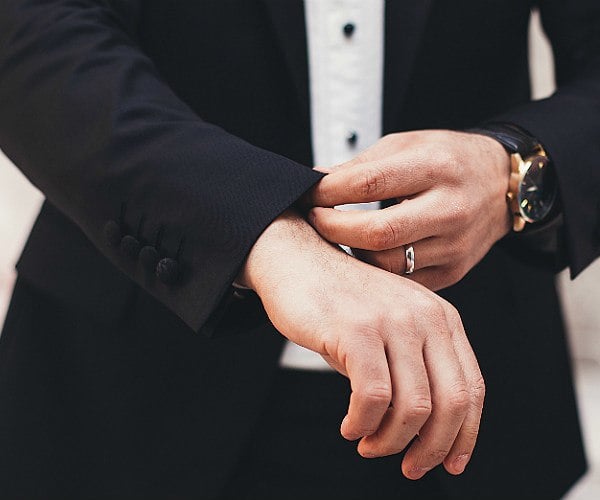
Although the Maldives has its own currency, the Maldivian Rufiyaa, USD is accepted in most destinations and often gives a slightly better price than using the Rufiyaa. Resorts will accept credit cards, however it is also useful to take cash, and this should be withdrawn in Malé before heading out to the sparsely populated atolls.
Bring reef-safe sunscreen for swimming in the sea; bottles tend to be on the smaller and more expensive side in the Maldives, and the price will soon mount up for a family of four or larger groups spending at least a week in the sunshine.
The Maldives grants all nationalities a free 30-day visa upon arrival, however overstaying will incur a substantial fee.
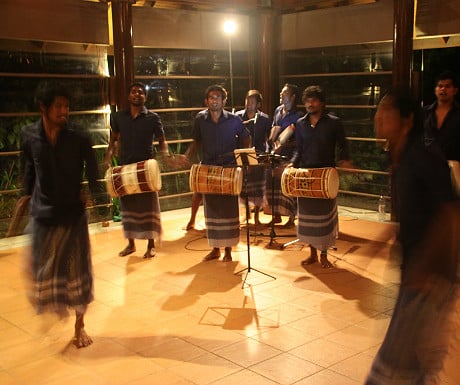
Language and culture
The official languages of the Maldives are Dhivehi and English, making communication relatively easy for international visitors. Some resorts offer the opportunity for visitors to learn some basic Dhivehi during their stay.
The Maldives is a laid-back country where the majority religion is Islam, and as such visitors should be respectful of a more conservative dress code: beachwear should be kept to the beaches and shoulders, thighs and chests should be covered when visiting restaurants, whether in the resort or elsewhere on the islands. Arms, shoulders and legs should also be covered when visiting mosques and local villages. Alcohol is available in the resorts but is prohibited elsewhere on the islands, and locals do not eat pork.
Over the centuries Maldivian culture has been influenced by the surrounding countries, most notably India, Sri Lanka, Indonesia, Persia, Arabia and Africa.
Visitors will find the cuisine a blend of the Middle East and Southeast Asia, with the creativity of the Maldivians using fresh local ingredients to make the recipes their own.
Traditional drumming and dancing known as ‘boduberu’ was brought by sailors from East African countries, and handicrafts such as weaving and carpentry have been a point of pride for the national identity, though in recent years these skills have been in decline as it is no longer possible to make a living from them and modern technology along with imported goods has created more efficient solutions in work and everyday life.
Useful phrases
- Hello – Assalaamu Alaikum
- My name is … – Aharenge namakee …
- What’s your name? – Kon nameh tha kiyanee?
- It’s nice to meet you – Baddhalu vee thi varah ufavejje
- Please – Adhes kohfa
- Thank you – Shukuriyaa
- Yes – Aan
- No – Noon
- I’m sorry – Ma-aafu kurey
- Do you speak English? – Ingireysin vaahaka dhakkan ingeytha?
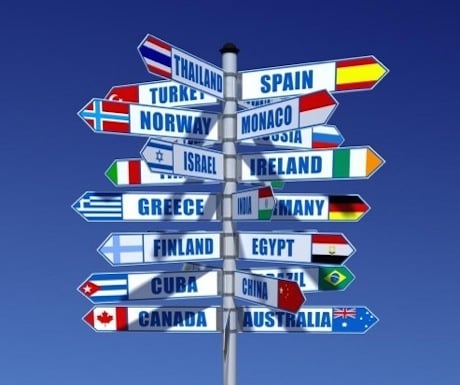
Weather in Maldives
The tropical climate of the Maldives provides ideal temperatures throughout the year, hovering around an average high of 28°C/82°F during the day and lows around 25°C/77°F. Humidity is kept low by the constant sea breezes, which also have a cooling effect that benefit those who want to spend as much time outdoors as possible throughout their visit.
Rainfall is highest from September through to December, although the Monsoon season is considered to run from May through to December. The sea temperature is a warm 29°C/84°F for most of the year, with temperatures dipping in December as the Monsoon season comes to an end.
The best time to visit is between the beginning of December and the end of February, when there are blue skies and low humidity with little chance of rain as temperatures drop at sundown.
MALDIVES WEATHERUseful information
Currency
The currency in the Maldives is the Maldivian Rufiyaa (MVR). See www.xe.com for current exchange rates with the British Pound, Euro and the American Dollar.
Power
The Maldives operates on 230V / 50Hz and uses type D and G sockets. The United Kingdom uses type G plugs and sockets and uses the same voltage system. Items such as USB chargers for phones and tablets should be compatible.
Telecommunications
To avoid roaming charges, most visitors choose to purchase a SIM card at the airport following arrival. These SIMS are valid for up to two weeks and depending on the plan you purchase, will come pre-loaded with data.
Timezone
UTC +5 (Malé) MVT Maldives Time
Tipping
Tipping is left to guest discretion as a 10% tip is included as a service charge, however guests can choose to give more to reward exceptional service, and a tip of $10-20 USD once per week is the traditional standard.
WiFi
WiFi is by and large available in all the hotels, resorts and villas in the Maldives, although some limit guest data usage and others might charge a daily fee. Wires may be available in the rooms as for laptop use as an alternative choice.
